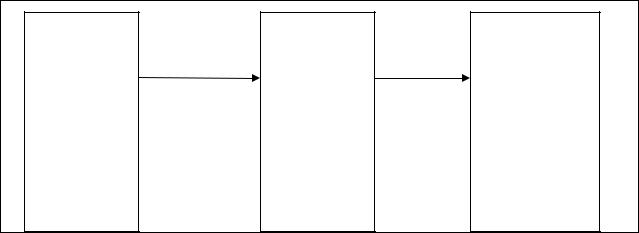
Методическое пособие 500
.pdf
The words below will help you understand the text:
1)compose [kəmˈpəʊz ] - состоять
2)hydrogen [ˈhaɪdrədʒ(ə)n] - водород
3)carbon [ˈkɑːb(ə)n] - углерод
4)trace elements [treɪs] - микроэлементы
5)sulphur [ˈsəlfər ] - сера
6)sedimentary rock [sedɪˈmentrɪ] – осадочная порода
7)undergo [ʌndəˈɡəʊ] – испытывать, переносить
8)convert [kənˈvɜːt] - преобразовывать
9)range of temperatures [reɪn(d)ʒ] - пределы колебания температур;
10)well sampling [ˈsɑːmpəlɪŋ] – взятие пробы из скважины
11)reservoir [ˈrezəvwɑ] - залежи нефти
12)subsurface mapping [ˈsʌbsɜːfɪs ] - подземное картирование
13)pump up [pʌmp ] - выкачивать
14)recover [rɪˈkʌvə ] - восстанавливать
15)refinery [rɪˈfaɪn(ə)rɪ] – нефтеперерабатывающий завод
16)challenge [ˈtʃælɪn(d)ʒ] - задача
17)land-disturbance [dɪˈstɜːb(ə)ns] - разрушение земель
18)vary [ˈveərɪ ] – меняться
19)caprock [kæp rok]- перекрывающая порода
20)otherwise [ʌðəwaɪz] - иначе
What is Oil?
Oil, otherwise known as ‘petroleum or crude oil’, is a thick black liquid composed primarily of hydrogen and carbon. Oil also contains trace elements of sulphur, nitrogen and oxygen.
Today’s oil deposits were formed millions of years ago, when dead marine organisms sunk to the bottom of the ocean and were buried under deposits of sedimentary rock. Subject to intense heat and pressure, these organisms underwent a transformation in which they were converted to oil over millions of years. This process is similar to the process of natural gas formation, however oil forms under a limited range of temperatures while natural gas forms under a wider range ones. This limited range of temperatures is called the ‘oil window’.
Oil is found in specific underground rocks called reservoirs. The rocks have tiny spaces in them that allow them to hold water, natural gas and/or oil. Impermeable rocks called cap rocks surround the reservoir and trap oil in its place.
Through exploratory activities such as seismic, well sampling, and subsurface mapping, geoscientists locate sites for oil drilling.
Oil is extracted from the reservoir by drilling a well and pumping it up the well. Once recovered, oil is transported by pipeline, ship, rail, or truck to a refinery.
11
The production and use of oil also come with many social and environmental challenges. Producing oil causes land-disturbance sometimes in environmentally sensitive areas, although this varies greatly depending on the production techniques used.
Sources: Studentenergy, URL: https://www.studentenergy.org/topics/oil (время обращения - 18.07. 2020).
Task 4. Match English and Russian equivalents:
1) otherwise |
a) |
сложная задача |
2) sedimentary |
b) |
промежутки, полости |
3) pressure |
c) |
грузовой автомобиль |
4) spaces |
d) |
осадочный |
5) rail |
e) |
трубопровод |
6) challenge |
f) |
иными словами, иначе |
7) truck |
g) |
железнодорожный путь |
8) pipeline |
h) |
давление |
Task 5. Find the odd word out, explain your choice:
a)oil, fuel, petroleum, liquid;
b)well, rock, space, reservoir;
c)nitrogen, refinery, sulphur, oxygen.
Task 6. Fill in the gaps with the words below. There are three extra words you don`t need to use:
Deposits, pressure, heat, mapping, formation, underground, hold, seismic.
1.Under the influence of … and … marine organisms are converted to oil.
2.1 barrel …s around 3, 85 liters of liquid.
3.Oil, gas, sulphur are … that are found in underwater layers of the earth.
4.The … of oil and gas depends on the temperature.
5.Geodesists locate the areas of … activities on the maps.
Task 7. Match the sentences as True or False. Prove your choice.
1.The influence of production of oil into the environment can`t be controlled.
2.Cap rocks help to hold oil in reservoirs.
3.Oil is composed of only hydrogen, sulphur and carbon.
4.Millions of years are needed for formation of oil and natural gas.
5.When the oil is refined it is transported into the recovery.
Task 8. Fill in the gaps with the information from the text:
1.Oil forms under a limited …. .
2.Tiny spaces in rocks allow to hold ….
3.Geoscientists locate sites for oil drilling through …. .
4.Oil is extracted from the reservoir by … .
5.Sometimes producing oil causes … .
Task 9. Answer the following questions:
1. What are the key components of oil?
12

2.How is oil formed?
3.What is the difference between oil formation and natural gas formation?
4.What is called “oil window”?
5.How is oil trapped in reservoirs?
6.What exploratory activities are there?
7.What happens when oil is extracted from the ground?
8.What influence does production and use of oil exert on the environment?
Task 10. Speak about oil.
PROJECT TIPS
Think of the most unusual/non-trivial ways of oil use. Present this information to the class.
Video Materials
a)You are going to watch the video about fossil fuels. Before watching make sure you know the words below: ancient - древний
swamp – болото decompose – разлагаться
organic matter – органическая материя fern – папоротник
expose to heat – подвергаться воздействию тепла energy density – плотность энергии
application – применение variety – многообразие
environmental issues – вопросы окружающей среды carbon dioxide – углекислый газ
renewable - обновляемый
b)Follow the link and watch the video: https://www.youtube.com/watch?v=zaXBVYr9Ij0
c)Watch the video again and fill in the gaps in the sentences below:
1. There are three major type of fossil fuels: …., … and …. . 2. Fossil fuels are considered …. resources because …
3. Fossil fuels are also the largest emissions of …. .
d)After watching (watching twice) answer the questions below:
1. How long ago was fossil fuel formed?
13

2.What factors influence the formation of fossil fuels?
3.What is the application of fossil fuels?
Lesson 3
WHAT IS NATURAL GAS?
Task 1. Answer the following questions, using the phrases:
I am not quite sure, but…, As far as I can say, …., Probably,
…, etc.:
1.Where do you use gas in your everyday life?
2.What qualities does gas have? (Choose from the options below): dangerous, flammable, coloured, colourless, hard, ordorless, light.
Task 2. Match the sentences below as true or false. Read the text below and choose your answers:
1.Gas is more dangerous than fossil fuels.
2.Gas is found in rocks.
3.Oil and gas are transported together.
Task 3. Read the text below and check your answers for Task 2. The words below will help you understand the text:
1)underground rocks [ˌʌndəˈɡraʊnd]- подземные породы
2)pore [pɔ:] – пора, скважина
3)impermeable [ɪmˈpəːmɪəb(ə)l] - непроницаемый
4)caprock - перекрывающая порода
5)conventional natural gas [conventional ˈnatʃ(ə)r(ə)l ] – обычный природный газ
6)shale gas [ʃeɪl]- сланцевый газ
7)tight gas [tʌɪt] - газ в плотных породах
8)sour gas [ˈsaʊə] - сернистый нефтяной газ
9)coalbed [kəʊlbed] – угольный пласт
10)gathering lines [ˈɡað(ə)rɪŋ] - сборные трубопроводы
11)removal [rɪˈmuːv(ə)l] -удаление
12)feeder [ˈfiːdə] – суфляр газа
13)rotten egg [ˈrɒt(ə)n] – тухлое яйцо
14)feedstock [ˈfiːdstɒk] – сырье для промышленности
15)associated gas [əˈsəʊʃieɪtɪd] — нефтяной газ, попутный газ
14
What is Natural Gas?
Natural gas is primarily methane (CH4) with smaller quantities of other hydrocarbons. It was formed millions of years ago when dead marine organisms sunk to the bottom of the ocean and were buried under deposits of sedimentary rock.
Natural gas is found in underground rocks called reservoirs. The rocks have tiny spaces in them (called pores) that allow them to hold water, natural gas and/or oil. The natural gas is trapped underground by impermeable rock (called caprock), and stays there until it is extracted.
Conventional natural gas can be extracted through drilling wells. Unconventional forms of natural gas like shale gas, tight gas, sour gas, coalbed methane and gas hydrates have specific extraction techniques. Natural gas can also be found in reservoirs with oil and is called associated gas.
There are two general types of natural gas, defined by their methane content, that reflect differences in the formation processes: biogenic gas (± 95% methane), or “dry” gas, which was formed by bacterial decay at shallow depth and thermogenic gas (<95% methane), or “wet” gas, which is a lower quality gas formed at high temperatures.
Natural gas is sent through small pipelines called gathering lines to processing plants. Processing involves four main processes to remove the various impurities: Oil and Condensate Removal, Water Removal, Separation of Natural Gas Liquids, Sulfur and Carbon Dioxide Removal. Gas is then transported through pipelines called feeders to distribution centers or stored.
Because natural gas is colorless, odorless, and tasteless, natural gas companies add mercaptan to natural gas to give it a distinct and unpleasant odor to help detect leaks in natural gas pipelines. Mercaptan is a harmless chemical that smells like rotten eggs.
When natural gas is burned, there are fewer greenhouse gas emissions and air pollutants when compared to other fossil fuels.
Natural gas is mostly used for domestic or industrial heating and to generate electricity. It can also be compressed and used to fuel vehicles and as a feedstock for fertilizers, hydrogen fuel cells and other chemical processes.
Source: Studentenergy, URL: https://www.studentenergy.org/topics/natural-gas (время обращения - 22.07.2020). Source: U.S. Energy Information Administration, URL: https://www.eia.gov/energyexplained/natural-gas/ (время обращения – 20.07.2020).
Task 4. Match English and Russian equivalents:
1) |
smaller quantities |
a) |
содержание метана |
2) |
extraction technique |
b) |
дизельный автомобиль |
3) |
methane content |
c) |
сборные трубопроводы |
4) |
bacterial decay |
d) |
атмосферные загрязнения |
5) |
gathering line |
e) |
меньшее количество |
6) |
air pollutants |
f) |
бактериальный распад |
15
7) |
generate electricity |
g) |
техника извлечения |
8) |
fuel vehicle |
h) |
вырабатывать электричество |
Task 5. Find synonyms from the text to the following words:
Cars, applied, smell, pipeline, common, originally, sea, small, factories.
Task 6. Fill in the gaps with the following phrases and words. There are three words you don`t need to use.
Feeder, smell, gas liquid, removal, domestic, carbon dioxide, gas emissions, fossil fuels, processes.
1.The … of the various impurities is an important part of gas processing.
2.Sulfur and … are the two substances that present in natural gas in underground rocks.
3.… and coal are the most widespread sources of … heating.
4.Mercaptan is used to make gas … .
5.Pipelines or … transport gas to the distribution centers.
Task 7. Fill in the gaps in the sentences using the information from the text:
1.“Dry” gas was formed by … at shallow depth.
2.Natural gas was formed when marine organisms sunk under deposits of … .
3.The main characteristics of gas are the following: it is … , tasteless and odorless.
Task 8. Put the prompts below in the order they correspond to the contents of the text:
a)processing of natural gas
b)natural gas reservoirs.
c)properties of natural gas.
d)when and how natural gas is formed.
e)the use of natural gas.
f)conventional and unconventional natural gas extraction.
g)the influence of natural gas to the environment.
h)two types of natural gas.
Task 9. Answer the following questions:
1.When is the gas formed?
2.What does natural gas consist of?
3.Where is gas stored before it is extracted?
4.What are unconventional forms of natural gas?
5.What are the general types of natural gas?
6.What is called “processing”? What does it involve?
7.How is it possible to detect the links of natural gas?
8.How is natural gas used?
16

Task 10. Speak about natural gas.
PROJECT TIPS
Think of the safety technique that should be applied when using gas a) at plants; b) at home. Report to the class.
Video Materials
a)You are going to watch the Part 1 of the video about natural gas. Before watching make sure you know the words below:
crucial – важный
coal seams – угольный пласт increase – увеличиваться
bound (past from bind) – связывать non-invasive - непроникающий data – данные
geological - геологический depth – глубина
peat - торф
b)Follow the link and watch the video: https://www.youtube.com/watch?v=V8EHHW-3N5Y (timing: up to 3:18)
c)Watch the video again and fill in the gaps in the sentences below:
1.The layers of peat were transformed into … .
2.Before the extraction of gas we first undergo … phases.
3.The first step is to build a general picture of the … … of the land.
d) After watching (watching twice) answer the questions below:
1.How is natural gas used?
2.What are the two ways gas is stored underground?
3.What should be considered before gas extraction?
17

Lesson 4
OIL AND GAS EXTRACTION
Task 1. Answer the following questions, using the phrases: I believe, I suppose, As far as I can say….:
1. What stages do you think are presented in the process of oil and gas extraction?
2. How long do you think it takes?
3. What is the most difficult in oil and gas extraction process?
Task 2. Read the text below and
check your answers for Task 1.
The words below will help you understand the text:
1)exploration [ɛkspləˈreɪʃ(ə)n] – разведка, изыскательские работы
2)appraisal [əˈpreɪz(ə)l] – экспертиза, оценка
3)chamber [ˈtʃeɪmbə] - скважина
4)measure [ˈmɛʒə] - измерять
5)viable [ˈvʌɪəb(ə)l] – жизнеспособный
6)probable reserve [rɪˈzɜːvz] – вероятный запас
7)unprovable reserve [rɪˈzɜːvz] – предположительный запас
8)economically feasible [ˈfiːzɪb(ə)l ] – экономически оправданный
9)deem [diːm ] – полагать, думать
10)tap – зд. добывать, качать
11)dig - копать
12)inject [ɪnˈdʒɛkt] – вводить, впрыскивать
13)recovery [rɪˈkʌv(ə)ri] – восстановление
14)removal [rɪˈmuːv(ə)l] – удаление, устранение
15)abandonment [əˈbandənm(ə)nt] – оставление, заброшенность
16)offshore [ɒfˈʃɔː(r)] – в открытом море
17)onshore [ˈɒnʃɔː] – прибрежный, береговой
18)vary [ˈveəri] – изменять, варьироваться
The Process of Oil and Gas Extraction
The process of getting oil and gas out of the ground begins with exploration and appraisal. Oil and gas are found under the ground in reservoirs that are sealed but connected to other chambers of oil and gas underground. When a reserve of oil is
18
found, the company will often produce a description of the quality of the oil and the estimated amount measured either by volume (barrels) or by weight (tons). The company may also classify some of the contents as proven reserves. Proven reserves are oil finds that are considered commercially viable—that is, the company is at least 90 percent certain that it would make money getting petroleum out of the ground and taking it to market. If oil is held in a probable reserve, then the company thinks there is at least a 50 percent chance of recovering the oil. Unprovable or possible reserves are those with a 10 percent to 50 percent probability of profitable extraction. The word resource is used to refer to all fields within a country, including those that may not be economically feasible to extract.
Once the reservoir is deemed commercially viable and the company has been granted legal authorization to tap it, the company will often begin digging test wells. These wells will give more information about viability and can indicate what type of equipment is best for production.
Production, the next phase after exploration and appraisal, is the process of getting the oil and gas out of the ground. This can occur in three different ways. Primary recovery efforts are when the oil will flow to the surface under its own pressure. When water or gas are injected into the reservoir to lift the oil, recovery is considered secondary. Tertiary, or enhanced, removal happens when chemicals are put into the well.
The production rates of wells vary greatly depending on the geology and technology used. Rates are usually measured in barrels per day. The lifecycle of a typical well will have a build-up period, peak, and then decline.
The final phase of an oil project is decommissioning and abandonment. This phase requires closing the reservoir, removing equipment, and restoring the environment to its previous state. The cost of extraction varies greatly depending on the type of oil and its location. Generally offshore oil is much more costly to extract than onshore oil.
Source: Natural Resource Governance Institute. NRGI Reader. April 2015, URL: https://resourcegovernance.org/sites/default/files/nrgi_Oil-and-Gas-Industry.pdf (время обращения - 23.07.2020).
Task 3. Match the English and Russian equivalents:
1) |
equipment |
a) |
оценка |
2) |
build-up |
b) |
восстановление |
3) |
location |
c) |
накопление, наращивание |
4) |
extraction |
d) |
оборудование |
5) |
vary |
e) |
извлечение |
6) |
appraisal |
f) |
скважина |
7) |
chamber |
g) |
меняться |
8) |
recovery |
h) |
расположение |
Task 4. Find the antonyms from the text to the words below:
Onshore, over, probable, finish, same, out, decline, start, opening, unusual.
19

Task 5. a) Make the derivatives out of the following stems:
Equip – … (noun), recover - … (noun), abandon – … (noun), explore – … (noun), prove – … (noun), produce – … (noun), describe – … (noun).
b) Fill in the gaps with the build-up derivatives:
1.… is the final phase of oil extraction.
2.The type of … used for oil extraction depends on the viability of the well.
3.… reserve is the one that has less than 50% chance of repeated profitable extraction.
4.There is a chance of …. if oil is held in probable reserve.
5.The … of oil and its quantity is produced when oil is found.
6.The phase of getting oil and gas out of the ground is called … .
7.The first stage of getting oil from the ground is … .
Task 6. Match the halves of the sentences so that they make sense.
1. |
Oil reservoirs are sealed |
a) |
considered commercially viable |
2. |
Proven reserves are |
b) |
start when reservoir is commercially viable |
3. |
Possible reserves are |
c) |
but connected to other chambers |
4. |
Digging test wells |
d) |
oil flows under its own pressure |
5. |
The recovery is primary |
e) |
less than 50 percent probability of profitable |
when |
extraction |
||
Task 7. Match the sentences below as True or False. Prove your choice.
1. If a company is 90 percent sure that the oil reservoir is profitable it is called probable reserve.
2.Test wells give more information about viability and the choice of equipment.
3.Production stage includes 5 possible stages.
4.The process of offshore extraction is more expensive than the onshore one.
5.The process of extraction starts with abandonment.
Task 8. Match the stages of oil extraction to the corresponding activities:
Exploration |
Production: |
Decommissioning |
(appraisal): |
|
and |
|
1. … |
abandonment: |
|
|
|
1. … |
2. … |
1. … |
|
||
2. … |
3. … |
2. … |
|
||
3. … |
|
3. … |
4. … |
|
|
|
20 |
|
